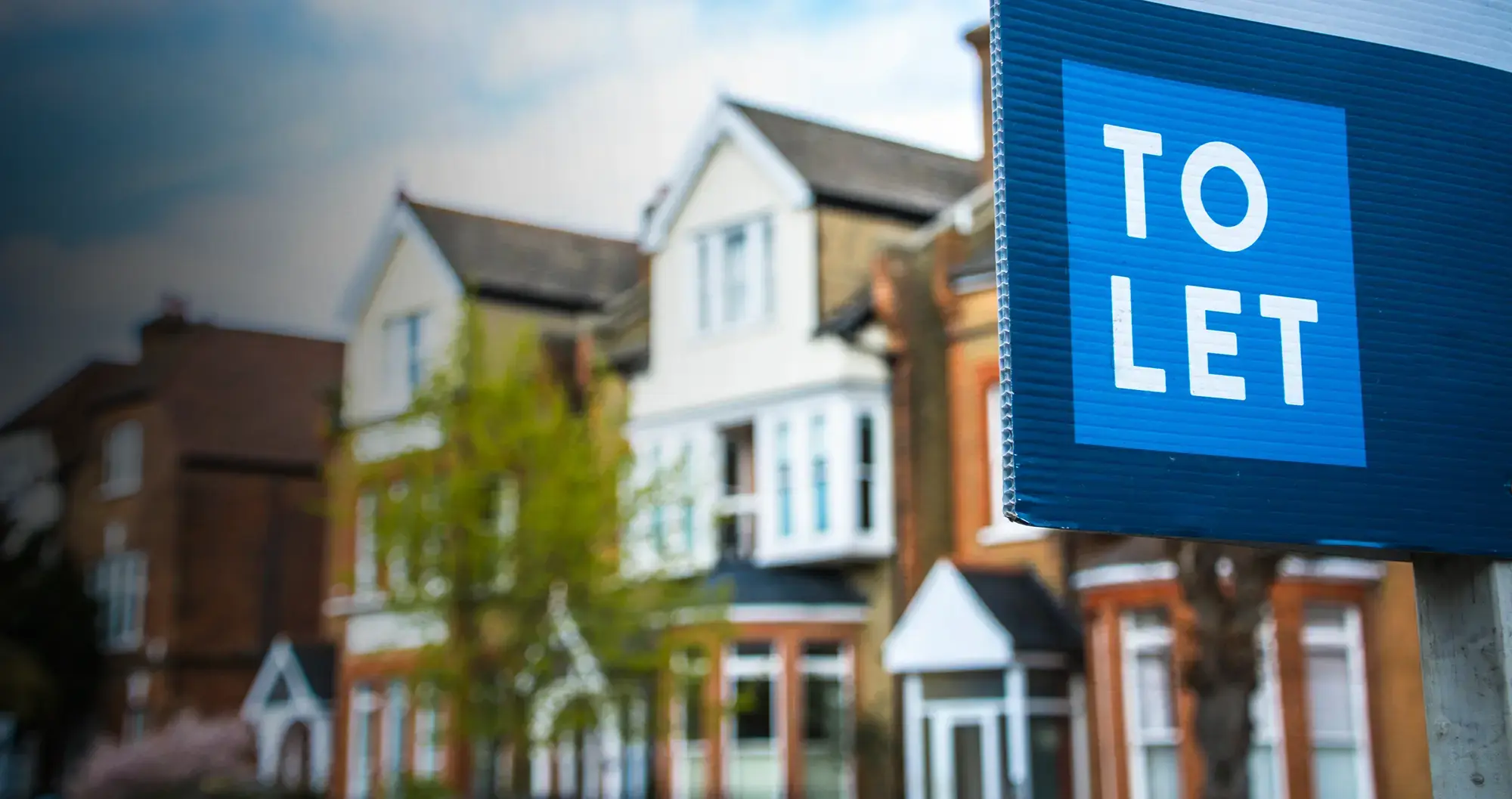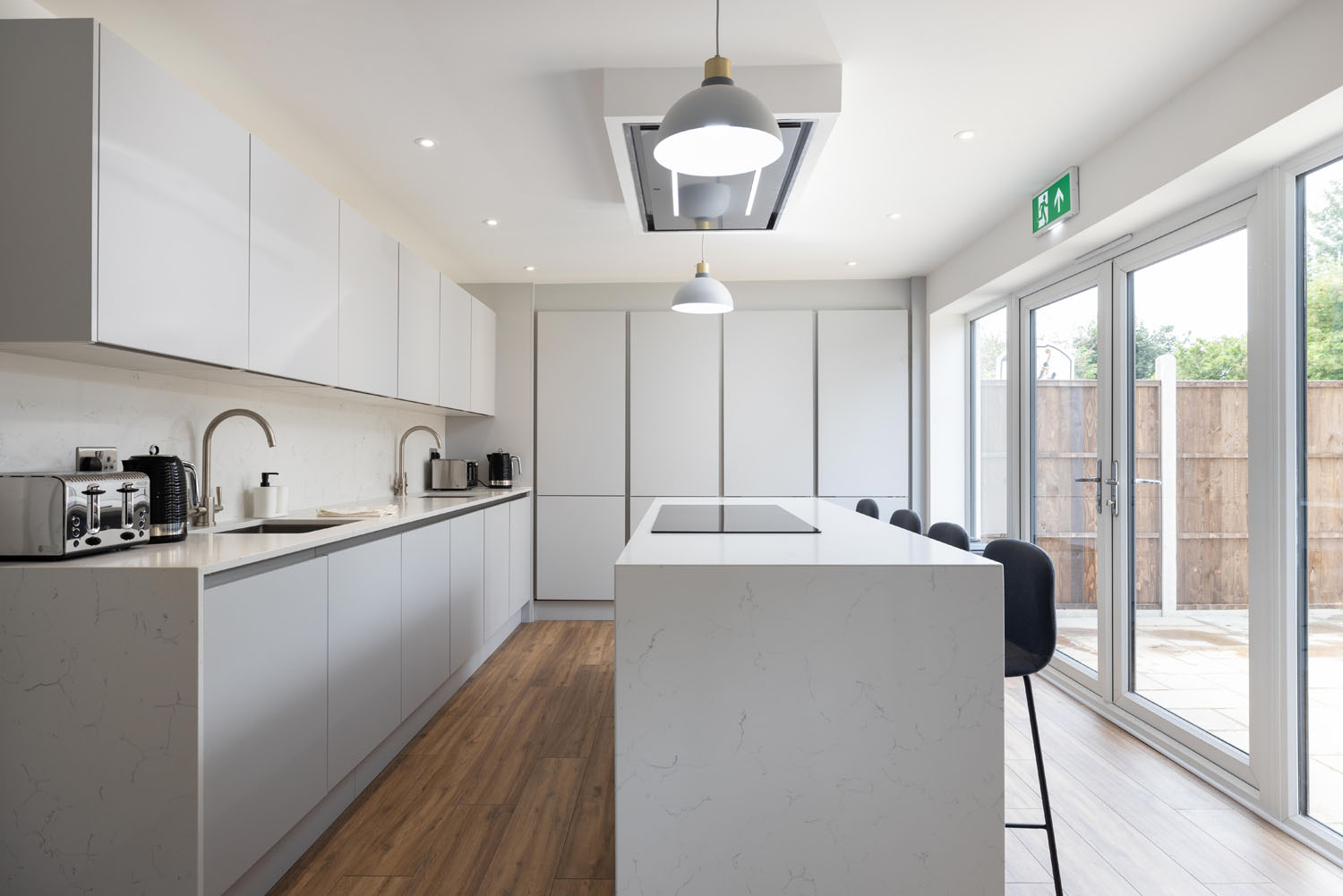
Buy-to-Let Mortgages
Whether you’re a first-time landlord or managing a growing portfolio, our expert Buy-to-Let mortgage brokers at Trinity Finance can help you secure the best deal for your investment. We work with leading high-street banks and specialist lenders to find flexible, tax-efficient solutions that fit your landlord strategy.
- Fast, friendly, and fully FCA-regulated service
- Exclusive Buy-to-Let rates not available direct
- Free expert consultation – speak to a specialist today
What Is a Buy-to-Let Mortgage?
A Buy-to-Let (BTL) mortgage is designed for people who want to purchase property as an investment to rent out rather than live in.
Unlike a residential mortgage, lenders assess your application based on expected rental income and the loan-to-value ratio, rather than solely on your salary.
Typical criteria include:
- Minimum deposit: usually 25%
- Rental income coverage: generally 125%–145% of the mortgage payment
- Interest-only or repayment options
- Available to individuals, partnerships, and limited companies
Our brokers guide you through every step — from understanding lender criteria to ensuring your investment delivers the best possible return.
Who We Help
Step-by-step guidance to help you purchase your first rental property confidently and affordably.
First-Time Landlords
Step-by-step guidance to help you purchase your first rental property confidently and affordably.
Portfolio Landlords
Tailored mortgage strategies for landlords with multiple properties seeking to optimise their borrowing or refinance.
Limited Companies / SPVs
Specialist advice for investors using Special Purpose Vehicles to purchase property tax-efficiently.
HMOs & Multi-Unit Properties
Expert support for complex Buy-to-Let scenarios, including HMOs and blocks of flats.
Holiday Lets & Short-Term Rentals
Access lenders who cater specifically to holiday homes and Airbnb-style investments.
Our Simple 5-Step Process

Initial Consultation
Tell us your goals and property plans.

Market Search
We find the most competitive rates from 100+ lenders.

Application
We handle the paperwork and liaise with underwriters.

Valuation & Offer
The lender values your property and issues your offer.

Completion
Your Buy-to-Let mortgage completes, and your property investment begins.

Buy-to-Let Costs to Consider
- Deposit: Minimum 25%
- Arrangement fees: 0–2% of the loan
- Valuation & legal fees
- Stamp Duty surcharge on additional properties
- Income tax / corporation tax implications
- Letting agent and maintenance costs
We’ll help you plan your investment realistically and ensure you understand every financial aspect.

Landlord Responsibilities
As a landlord, you must comply with safety and legal standards, including:
- EPC rating of E or higher
- Annual gas safety certificate
- Smoke and carbon monoxide alarms
- Tenant deposit protection
- Right-to-Rent checks
Our brokers can connect you with property management and compliance partners if needed.
FAQs
Can you rent out your home without a buy-to-let mortgage?
The terms for a residential mortgage are different from those of a buy-to-let mortgage. As such, if you rent out your home, you may be in breach of your mortgage terms. There can be serious consequences for this, such as being asked to repay your mortgage in full immediately. The exception to this is if you only need to rent out your home for a short time. In this case, you can ask your lender for their consent to let. If your lender agrees to this, be aware that your interest rate may increase. This is because renting out your home increases the level of risk.
Can you get a buy-to-let mortgage as a first-time buyer?
Yes, as long as you meet the lender’s eligibility criteria, you can get a buy-to-let mortgage as a first-time buyer. It may be more challenging than buying a home for yourself and applying for a standard residential mortgage. This is because some lenders prefer you to already be a homeowner. Our mortgage brokers know which lenders offer buy-to-let mortgages to first-time buyers, so they can approach the right ones on your behalf.
What is a portfolio landlord?
A portfolio landlord is a landlord who owns four or more properties. Applying for a mortgage or remortgage as a portfolio landlord is slightly different from applying as a normal landlord. As you own multiple properties, you have to provide information on each of them. Some lenders place restrictions on portfolio lending, such as a maximum loan-to-value ratio across the entire portfolio or a maximum number of properties.
You may prefer to place all of your rental properties under one portfolio mortgage. This simplifies your finances as you only need to make one mortgage payment each month, check one statement and liaise with one lender. You can also do this with your property insurance, insuring all of your rental properties under one portfolio insurance policy. This is more cost-effective than taking out a separate landlord insurance policy for each property.
Can you live in your buy-to-let property?
No, as the owner of the buy-to-let property, you cannot live in it as this will breach the terms of the buy-to-let mortgage. If you’re found to be living in your buy-to-let property, the lender can demand that you immediately repay the mortgage in full.
Is there a maximum age requirement for a buy-to-let mortgage?
Lenders have their own eligibility criteria but, generally, they do set a maximum age limit. This is the maximum age you can be at the end of the mortgage term. Usually, this is 75 or 80 years old.
Can you use a limited company for a buy-to-let?
Yes, if you prefer to invest in a buy-to-let property via a corporate setup instead of as an individual, you can do so using a limited company or a special purpose vehicle (SPV). You may wish to do this for tax purposes. The lending criteria are slightly different from applying as an individual because the lender needs information on the directors and shareholders. The interest rate is also usually higher for a limited company buy-to-let mortgage.
What does the interest coverage ratio (ICR) mean?
With a buy-to-let mortgage, the anticipated rental income is used in the affordability assessment to calculate how much you can borrow. The projected rental income must cover the mortgage payments by a specific ratio, which is usually 125%. This figure is known as the interest coverage ratio (ICR). For example, if your expected gross rental income is £750 per month, this covers monthly mortgage payments of £600. Many lenders stipulate a higher ICR of 145%.
Can you get a buy-to-let remortgage?
Yes, you can remortgage your buy-to-let property just as you can remortgage your home. Remortgaging can be a good option if your buy-to-let deal is coming to an end and you want to secure a new deal to avoid paying your lender’s standard variable rate. Or you may have found a better deal with a cheaper interest rate and wish to remortgage to take advantage of it. Just bear in mind that you may be penalised with an early repayment charge if you remortgage too early. Another reason you may want to get a buy-to-let remortgage is to release some of the equity you’ve built up in the property to use as a deposit for a new property.
What happens when the mortgage term ends?
With an interest-only buy-to-let mortgage, you only pay off the interest each month. This means that at the end of the mortgage term, the entire loan needs to be repaid. As such, you need to plan how you intend to do this, which is known as your exit strategy.
You may decide to sell the property and repay the mortgage loan with the proceeds, for example. There is a risk here, though, that property prices might drop, leaving you with a shortfall that you have to find some other way to pay. It’s a good idea to save some of your rental income each month. That way, you can have peace of mind that you have a financial buffer for this purpose.
Rather than selling the property, you may wish to keep it as a rental investment. In this case, you can refinance to another buy-to-let mortgage deal.
Can you get a buy-to-let mortgage for a holiday home?
Buy-to-let mortgages are designed for properties that are to be rented out on a long-term basis. When a property is to be used as a holiday home, the holiday lets are for short periods. As such, you need a specific holiday let mortgage. As seasonal rental incomes fluctuate for holiday homes, they pose a higher risk for lenders, resulting in stricter criteria. Whereas you can’t live in your own buy-to-let property, you can stay in your own holiday home. You just need to ensure that it’s available to holidaymakers for a certain amount of time during the year and that it is let out for a specific period.
Do buy-to-let mortgages have higher interest rates?
Rental properties pose a higher risk to lenders than standard residential properties. This is due to potential void periods, late rental payments by tenants and fluctuating rental incomes for landlords. As such, lenders charge higher interest rates for buy-to-let mortgages to compensate them for this additional risk. Lenders also tend to charge higher fees for buy-to-let mortgages for the same reason.
Do you need an EPC for a buy-to-let property?
All rental properties must have a valid Energy Performance Certificate (EPC). Your property must have a minimum energy efficiency rating of E before it can be rented out. If it doesn’t, you must ensure that the necessary work is carried out to bring the rating up to or above that level. Having a high energy efficiency rating for your property can be beneficial. Not only can this increase your property’s value but some lenders offer preferential rates for properties with a high rating.
How Much Can You Borrow?
Lenders calculate affordability based on rental income and loan-to-value (LTV).
Most require that rental income covers 125%–145% of the mortgage payment at a stress rate (usually 5.5%–6.5%).
Example:
If your expected rent is £1,000 per month, you may borrow around £150,000–£170,000, depending on the lender’s stress test.
Our brokers can help you calculate your exact borrowing potential — contact us for a personalised quote.
What is top slicing?
Some lenders offer a bit more flexibility in their affordability assessments for buy-to-let mortgages. If your anticipated rental income isn’t adequate to cover the mortgage, your disposable income can be taken into account to cover the shortfall. This is known as top slicing.
Can you switch to a buy-to-let mortgage from a bridging loan?
Buy-to-let means that your property’s use is specifically for renting out to tenants and receiving a rental income. A rental property carries more risk than an owner-occupied one. This is why you’ll be in breach of your mortgage if you rent out your home.
There may be an occasion, though, when you only want to rent out your home on a short-term basis. You may have to move away from home temporarily for work purposes, for example. This is where your lender’s consent to let comes in. A consent to let agreement is when your lender permits you to rent out your home, usually for up to a year, without changing your standard residential mortgage. As this arrangement increases the risk for the lender, they may charge you a higher interest rate and a fee.
Can you switch to a buy-to-let mortgage from a bridging loan?
Yes, switching to a buy-to-let mortgage after taking out a bridging loan is a good exit strategy to use for that loan. For example, you may decide to use a bridging loan to buy a property at auction. Once the transaction has completed, you can repay the bridging loan by refinancing to a buy-to-let mortgage. Or you may wish to take out a bridging loan to carry out work on a property. When it’s finished and you’re ready to use the property as a rental investment, you can switch to long-term finance with a buy-to-let mortgage.
How does a buy-to-let mortgage differ from a standard residential mortgage?
A standard residential mortgage is designed for a home that you live in, whereas a buy-to-let mortgage is designed for a property that is rented out to others. Rental properties pose an increased risk for lenders so there are stricter terms as well as higher interest rates and fees to counteract this. You also need to pay a much higher deposit than for a standard residential mortgage.
Buy-to-let mortgages are also usually offered on an interest-only basis. This makes the monthly mortgage payments lower when compared with a repayment mortgage. However, the full loan must be repaid at the end of the mortgage term. This also means that the overall cost of the mortgage is higher as interest is always charged on the full loan amount rather than a reducing amount.
Can you apply for a buy-to-let mortgage with bad credit?
Lenders generally expect you to have a good credit score when applying for a buy-to-let mortgage. As such, there are some who won’t lend to you if you have bad credit. However, there are other lenders who will lend to you, assessing your case on individual merit. Your buy-to-let mortgage may take longer to arrange and you’ll have fewer options to choose from. You also need to bear in mind that you’ll be charged a higher interest rate and possibly higher fees. These are to compensate the lender for the higher risk involved with a bad credit buy-to-let mortgage. Our mortgage brokers can help you to navigate this type of issue when arranging a mortgage for your rental property.
Can you rent out your buy-to-let property to a family member?
If you wish to rent out your property to a family member, you need a specific type of buy-to-let mortgage, called a family buy-to-let mortgage. Unlike standard buy-to-let mortgages, this is a regulated mortgage. A family buy-to-let mortgage is hard to come by as few lenders are prepared to offer it. As our mortgage brokers have unrestricted access to first and second charge lenders, get in touch with us if you’re thinking about proceeding with this rental arrangement.
What’s the difference between buy-to-let and let-to-buy?
Buy-to-let refers to you buying a property with the sole purpose of renting it out to others. Let-to-buy, on the other hand, is when you rent out your current home so that you can buy somewhere else to live. This arrangement basically consists of two mortgages. You need to switch your current residential mortgage to a buy-to-let mortgage so that you can rent out your property. You also need to take out a residential mortgage for your new home. A let-to-buy arrangement is a niche product and our mortgage brokers work closely with lenders offering this financial solution.
Do you need home insurance for your buy-to-let property?
When financing your purchase with a buy-to-let mortgage, the lender will more than likely require you to have buildings insurance in place. It’s also recommended to take out contents insurance for any belongings you have left in the property for your tenants to use.
A landlord insurance policy can include both of these as well as additional types of cover that offer protection against the risks posed by rental properties. Typically, these include loss of rent insurance, property owners’ liability cover, rent income protection and replacement locks and keys. You can also choose from a host of optional add-ons, such as accidental and malicious damage, legal expenses, landlord home emergency cover, rent guarantee insurance, alternative accommodation, employers’ liability insurance, unoccupied property cover and more.
Can you remortgage a buy-to-let property?
Yes, you can get a buy-to-let remortgage just as you can remortgage when you have a standard residential mortgage. You may wish to do this because your deal is coming to an end and you want to get a better one. If you don’t remortgage, you’ll be moved onto your lender’s standard variable rate when the deal ends. This is usually higher than other rates so it will cost you more. Therefore, it’s advisable to remortgage before your deal ends. You can usually do this up to 6 months in advance.
Another reason you may want to remortgage is if you’ve built up some equity in your rental property. You may want to use it to carry out improvements or as a deposit to buy another property. Just be aware that if you remortgage before the tie-in period for your deal has ended, you may be penalised with an early repayment charge, which can be very costly.
Remortgaging can also be a good exit strategy if you don’t wish to sell your rental property at the end of the mortgage term.
How many buy-to-let mortgages can you have?
Lenders vary in how many buy-to-let mortgages they allow you to have. Some may only allow one or two, whereas others may agree to multiple buy-to-let mortgages. Rather than limiting the number of buy-to-let mortgages you can take out with them, some lenders set a maximum borrowing limit across all of the products held with them. If you have several rental properties, you may prefer to finance them all using one portfolio mortgage.
Should you choose an interest-only or a repayment buy-to-let mortgage?
Most buy-to-let mortgages are taken out on an interest-only basis. This means that you only pay the interest charged on the loan each month and don’t pay off any of the capital. At the end of the mortgage term, you have to repay the entire loan. As such, the lender will need to know your exit strategy. For example, whether you have savings, intend to sell the property, plan to sell another asset to cover the loan or prefer to refinance. Having an interest-only mortgage keeps your monthly payments lower, helping with your cash flow.
If you’d rather pay off the loan throughout the mortgage term, however, then a repayment mortgage is a better option. This option ensures that the loan is completely repaid by the end of the term so that you own the property outright. As the monthly payments are higher than those of an interest-only mortgage, you need to ensure that the rental income is high enough to cover them.
Speak to an expert Buy to Let Mortgage adviser
Our specialist Buy to Let mortgage brokers are here to guide you through the entire mortgage and finance process, helping you secure the best Buy to Let mortgage deal tailored to your needs.

Louis Chalk
Associate Director

Emma Taylor
Buy to Let Mortgage Consultant

Omer Mehmet
Managing Director
Buy to Let Mortgage Lenders
Partner with specialist lenders who understand Buy to Let mortgages


